Warren Feeney – 8 May, 2014
For those prepared to give over the time, there are arguments and issues that do emerge. Even the installation of the exhibition as a library/resource room acknowledges a focus on principles of littoral art - outside the constraints of traditional gallery viewing, instead focusing on research, debate and social action. From this perspective, the exhibition represents a response to engaging with the arts that The Physics Room has given increasing attention to over the past 12 months.
Christchurch
Interviews with selected artists
Art and Social Change Research Project: Delhi Residency 2013
Curated by Mercedes Vicente
18 April - 1 June, 2014
Based on the premise that art can be an agent for community well-being and social/political transformation, Art and Social Change Research Project: Delhi Residency 2013 is an exhibition that for many artists and arts professionals will re-affirm perceptions about the nature of innovative and challenging arts practice in New Zealand.
The exhibition is curated by Mercedes Vicente and takes the form of a report, made up of working notes, research material, texts and interviews. Presenting information gathered during her attendance at the Khoj International Artists Association in New Delhi, Vicente’s visit to India considers the feasibility of beneficial working relationships between artists and social entrepreneurs (individuals and/or organisations engaged globally in social change).
The notion that art may act as a vehicle for community and social well-being shifts attention from the purely aesthetic to art as a means for moral, social and political influence. It is an idea that is embedded in our cultural history and one New Zealanders have a great affection for. A principle that has been fundamental to the development of the modern movement in this country. From left-wing journals like Tomorrow in the late 1930s, providing commentary by M T Woollaston on the country’s art and culture, to recent public arts projects like those assisted by Letting Space in Wellington - at the forefront of contemporary art over the past seventy years has been an assumed faith in the merits of socialism.
So it should come as no surprise that Art and Social Change Research Project: New Delhi 2013 has been accorded significant attention, running concurrently at The Physics Room in the South Island and Te Tuhi in Auckland throughout May and June. There is an implication that its content will feed, at some level or other, and sooner or later, into the arts community.
Art and Social Change Research Project: New Delhi 2013 provides comparative examples and responses about ways in which artists have implemented projects overseas at a social and community level. The issues raised are heightened by the context of the countries they have taken place in; Egypt, Colombia and India, all evolving democracies, populated by volatile communities and social inequalities, receptive to change and improvement.
The outcomes of Vicente’s research were initially intended to be specific, answering the proposition: Is ‘long term collaboration between artists and social entrepreneurs… feasible or even desirable, as a way to have lasting effects in communities?’ Yet, the gallery visitor needs to navigate through a significant amount of material to find the answers and Vicente appears to have reached the conclusion that the issues are too complex to provide any concise answers. Accordingly, reading material is randomly displayed on a single table, a series of unedited interviews with artists, educators, entrepreneurs and activists are available for viewing and listening, and a recommended reading list is provided for further research.
Fancy sitting through three hours of interviews to gather an overview of arguments for and against the integrity and potential of the arts to deliver social wellbeing? Vicente’s research is presented as an open sharing of ‘the various degrees of digression, procrastination, sense of enlightenment and overwhelming bewilderment inherent in conducting curatorial research within such challenging contexts.’ In terms of a gallery and reading experience, the presentation of a significant volume of unedited information for public consumption is less than helpful. Surely, if context is everything in the arts, some form of measure or evaluation is necessary for such an exhibition?
However, for those prepared to give over the time, there are arguments and issues that do emerge. Even the installation of the exhibition as a library/resource room acknowledges a focus on principles of littoral art - outside the constraints of traditional gallery viewing, instead focusing on research, debate and social action. From this perspective, the exhibition represents a response to engaging with the arts that The Physics Room has given increasing attention to over the past 12 months, with workshops, performances, meetings, etc - a commitment that sees a welcome and increased dialogue with artists, curators and galleries beyond New Zealand, yet all contained within a programme of relevance to Christchurch.
Other underlying ideas that emerge are the importance of genuine engagement by artists at a local level, consulting meaningfully with communities. Discussions with artist Sreejata Roy, the initiator of The Park (2008-09) in Ankur, New Delhi, reveals the success of a project realised through listening and responding to the needs of local women to establish their own public meeting space.
Equally predominant is a skepticism about the morality and influence of social entrepreneurs and claims about genuine social change that they may generate in communities needing basic resources for living. Mention is made of TED (Technology, entertainment and design) an international non-for-profit established by the Salping Foundation in in the 1990s. There are numerous online success stories of projects it has engineered in India, yet in an interview with artist, Prayas Abhinav - based in Bangalore and Admedabad - he contrasts his work as an artist in public art and civic gardening with his employment as a social entrepreneur. He claims that the questions asked of him by TED have the sound of a marketing strategy: ‘Do you have an idea which is innovative? Are you ethical and can you have an impact?’ Adhinav maintains that he was required to focus on outcomes that reflected well on those employing him, and that it was all too easy to weave ‘deceit around oneself.’
Adhinav’s observations however, provide only a part of the story. The inclusion of a paper in the Journal of World Business by lecturer in the Faculty of Business at the University of Victoria, Canada by Ana Maria Peredo on social entrepreneurship reveals the complexities of non-profits and questions about negotiation and compromise as fundamental to any project seeking to improve the quality of life of Indian communities. Adhinav’s dismissive commentary, reiterates an attitude that recognises a limited number of processes or means of achieving political and social betterment through the arts. In doing so, Art and Social Change Research Project: Delhi Residency 2013 opens up the welcome possibility of other models for New Zealand artists to reconsider the predominantly ‘them and us’ viewpoint that have too often typified such projects in this country.
An assumed faith in the potential to engender change beyond the space of the gallery is also a predominant theme. Like conceptual practice in the 1970s, the idea that engagement by artists with the political and social through community-centred projects to achieve positive outcomes is assumed as fundamental by curators, artists and academics interviewed. Curiously, what is largely missing from such an equation is the necessity for one of the most fundamental principles of the visual arts: Their capacity to also provoke and challenge, as a means to extending knowledge and understanding.
Warren Feeney
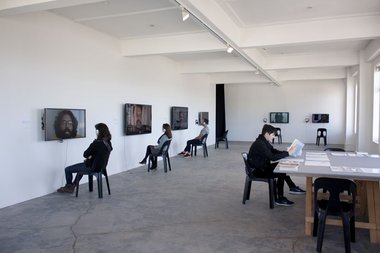
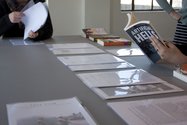
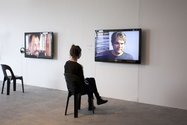
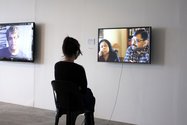

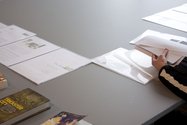
 Two Rooms presents a program of residencies and projects
Two Rooms presents a program of residencies and projects Advertising in this column
Advertising in this column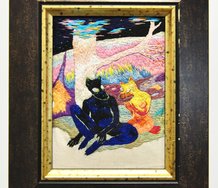
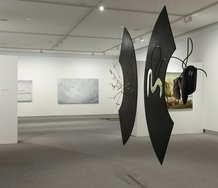
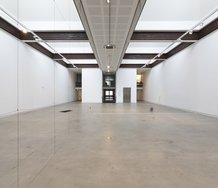

This Discussion has 0 comments.
Comment
Participate
Register to Participate.
Sign in
Sign in to an existing account.